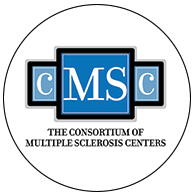How the multiple sclerosis (MS) therapy Tecfidera (dimethyl fumarate) works on a molecular level has finally been uncovered, using a new method that can map a drug’s protein targets. The insights gained may open up new avenues for the development of more specific drugs, based on the same mechanisms, but with fewer side effects.
The study, “Chemical proteomic map of dimethyl fumarate–sensitive cysteines in primary human T cells,” was published in the journal Science Signaling.
“This new technology has given us insights into the therapeutic modulation of the immune system that we could not have obtained with standard approaches,” John R. Teijaro, an assistant professor at The Scripps Research Institute (TSRI) and co-senior author of the study, said in a news release.
Although Tecfidera is the most widely prescribed MS drug available as a pill, researchers have not really understood exactly how it works. This is often the case for drugs that have been around for a while, and dimethyl fumarate is also the main component of the psoriasis drug Fumaderm, which has been used successfully since the 90s. (Tecfidera was approved for relapsing MS by the U.S. Food and Drug Administration in 2013).
Many earlier studies attempted to determine how Tecfidera slows relapse rates in MS, and scientists have suggested that a protein called Nrf2 is the treatment’s main target. The idea is that Tecfidera activates Nrf2, which, in turn, unleashes a forceful antioxidant response. But more recent investigations pointed to it mostly working to reduce the activation of the immune system.
The mapping method that made the new insights possible was developed in 2014 by Benjamin F. Cravatt, chair of the Department of Chemical Physiology at Scripps and the study’s co-senior author. It allows researchers to detect how a drug interacts with proteins by mapping a particular kind of strong link — that between a drug and an amino acid called cysteine, found in almost all proteins.
This amino acid is often involved in drug-protein interactions, and the map produced helped researchers understand which proteins are affected, even in complex biological systems where many thousands of proteins are present.
The Scripps research team discovered that Tecfidera interacts with about 50 different proteins, including enzymes and proteins controlling gene activity. Particularly, the team noticed that many of the proteins were involved in activating immune T-cells, which are known contributors to MS.
Recent studies have suggested that Tecfidera reduces immune activity independent of its actions on Nrf2, an idea supported by the fact that there are cases of patients on Tecfidera treatment who have developed progressive multifocal leukoencephalopathy (PML) — an infection that only occurs in people with weakened immune systems.
Further molecular studies confirmed that Tecfidera prevents the activation of T-cells, and it does so by binding to several proteins on the surface of these cells.
The research team is now using the protein interaction map in attempts to develop drugs that interact only with the proteins found to be most important. Such an approach might lessen side effects linked to Tecfidera treatment.
“We’re interested ultimately in making more selective, site-specific drugs, both to reduce immune activity and to boost it,” Teijaro concluded.










